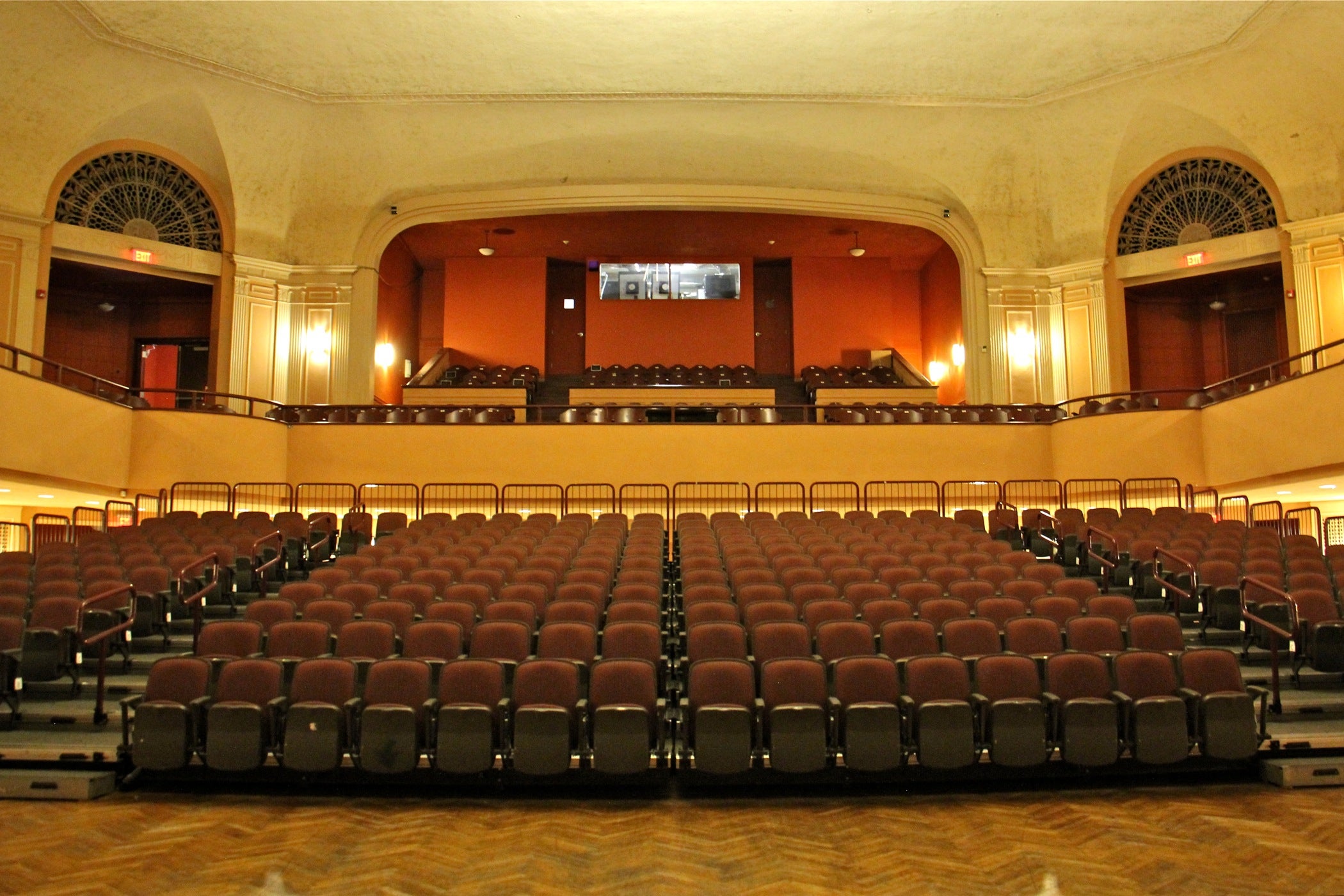Art house cinema finds a home on the Avenue of the Arts
Philadelphia’s only year-round art cinema venue moves across town to the Avenue of the Arts.
Listen 1:54
Lightbox Chief Curator Jesse Pires has relocated the film center to The University of the Arts, where screenings will resume this month. (Emma Lee/WHYY)
On Friday, the Lightbox Film Center will inaugurate its new space in the Gershman Y building on Broad Street with unabashed art house fare: the latest film by avant-garde artist Matthew Barney, “Redoubt,” a mythical, meditative tale about hunting set in the Sawtooth Mountains of Idaho.
That will be followed on Saturday by “Satantango,” an epic over seven hours long, made 25 years ago by Hungarian filmmaker Béla Tarr.
“Meditative” would be an understatement. Tarr built a reputation on the art house circuit for making extremely slow-moving films.
“It consists of 12 shots in seven-and-a-half hours,” said Lightbox director Jesse Pires, about “Satantango.” “There’s a breathtaking stillness that each scene is imbued with. It’s like watching photographs come to life.”
None of this is standard popcorn fare. Nevertheless, Pires says more than 100 tickets have been sold in advance for “Satantango,” making it nearly half sold-out already.
Pires is in his new home, a 270-seat theater in Gershman Hall (formerly the Gershman Y) on the campus of the University of the Arts on Broad Street. UArts absorbed Lightbox after Lightbox announced last year that it would have to leave its former home at the International House in West Philadelphia.
Lightbox had been a program of I-House for more than 40 years. It is Philadelphia’s longest-running, year-round, art house cinema with ambitious programs of foreign, experimental, historic, avant-garde, and sometimes downright difficult movies.
I-House decided to sell its building on Chestnut Street near the University of Pennsylvania campus, shrinking its services for international students. That included Lightbox, which had to find a new home.
“I’ve always seen our programming as a perfect complement to a university program or a museum,” said Pires. “We’re not a typical movie theater. To have students and faculty to use us as a resource seems like a great way to work together.”
Lightbox will use the third floor auditorium of the Gershman Y, which for years was the home of the Jewish Film Festival, as well as a performance space.
Pires says the move to UArts will not impact his curatorial programming, a promise upheld by his opening weekend picks. Next week, he will screen a new documentary, “Punk the Capital,” about the rise of punk rock in Washington, D.C. Then, in March, Pires rolls out a series of Romanian New Wave: films made after the 1989 overthrow and execution of communist leader Nicolae Ceaușescu.
“I had very little assignment to Jesse, except, ‘Go curate the best films that are out there,’” said UArts President David Yager. “It wasn’t about making it entertaining, it wasn’t about building audience, it wasn’t about any of those things. Because that’s not what I’m interested in.”
Yager brought Lightbox into the UArts fold as part of a promise to provide students the best possible exposure to a multitude of art forms. Last year, UArts opened a virtual reality studio toward the same end.
He also saw an opportunity: Lightbox was losing its home at the same time UArts was planning to build a new screening room. Yager said that to create his own film screening program from scratch, on the level of Lightbox, would be cost-prohibitive.

“I don’t think people realize they are expensive to do. They are a loss leader, a loss proposition in general,” said Yager. “Our mission is on educating our students, so we are limited in terms of outreach. This adds to our outreach portfolio, it adds to the community, it brings people into our buildings, and gives students the ability to see films on a regular basis.”
The cinema landscape in Center City Philadelphia is shifting, with the loss of the Ritz at the Bourse on Fourth Street and the addition of the multiplex at the Fashion District. In 2018, the Philadelphia Film Society turned the Prince Theatre into a full-time cinema space. Bringing Lightbox into the fray of the Avenue of the Arts increases the breadth and density of film in the heart of Philadelphia.
The Bourse had a reputation of screening not just first-run films, but also more obscure fare, the occasional documentary or foreign film that would have no other place to be seen in Philadelphia.
Lightbox’s repertory programming exists on a different plane than first-run cinema, but Pires says he may sometimes bring in the kind of films that made the Bourse distinctive.
Ultimately, Lightbox will have its own dedicated screening venue in the basement of the Gershman Y. The auditorium upstairs has been screening films for many years, complete with ornate mid-century lighting and pressed-tin ceiling accents, but it was not made for showing movies. The seating, for example, is installed on risers in the middle of the hardwood floor. There is no acoustic paneling. It has a balcony, but the sightlines are not ideal.
“There’s a difference between an auditorium that screens film, and a film screening room built for screening films,” said Yager. The new space in the basement will be specifically designed for films, but it is still a long way off as funding and design plans are yet to be solidified. Pires is expecting to stay in the auditorium for at least a few years.
WHYY is your source for fact-based, in-depth journalism and information. As a nonprofit organization, we rely on financial support from readers like you. Please give today.





